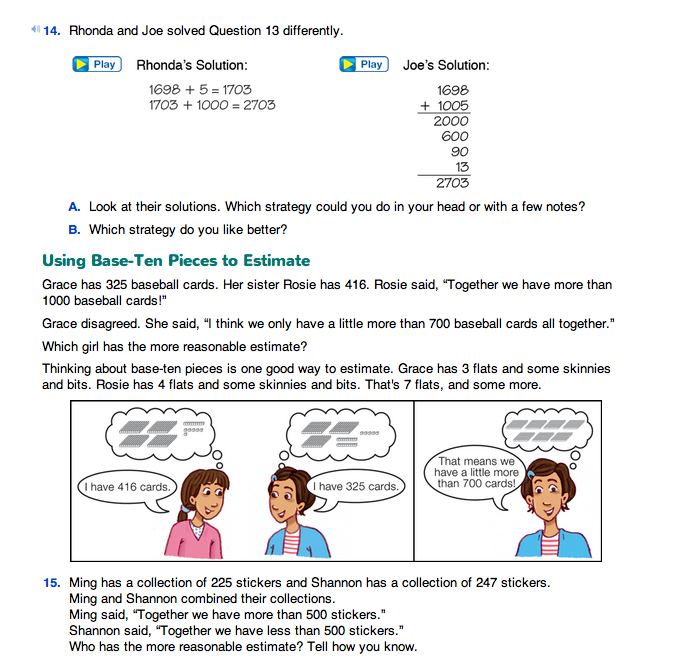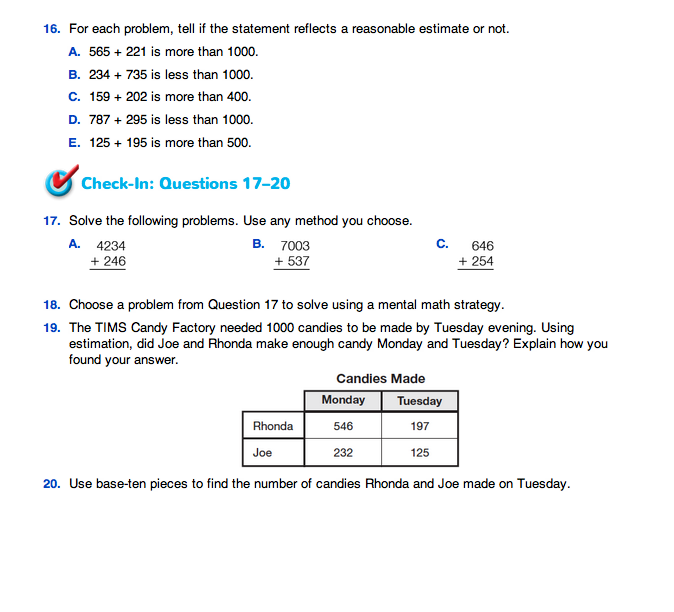Addition
Est. Class Sessions: 2–3Developing the Lesson
Part 4. Using Base-Ten Pieces to Estimate
Picturing base-ten pieces is a good way for children to estimate.
For example, pose the following problem:
Ask students to imagine base-ten pieces representing the number of students at the schools. They should see that 527 is 5 flats (and some skinnies and bits) and 619 is 6 flats (and some skinnies and bits). Thus, the number of students altogether is about 11 flats (1 pack and 1 flat) or 1100 students.
This type of reasoning is often called front-end estimation. We estimate by using only the digits on the farthest left of a number. Thinking about base-ten pieces makes this easier because we think about the largest base-ten piece involved. Suggest more problems to solve using front-end estimation:
843 + 426 134 + 234 550 + 435
Then, ask:
Ask students to turn to the Using Base-Ten Pieces to Estimate section in the Student Guide. Read the story about Grace and Rosie and their baseball card collection. Ask students which estimate is more reasonable, Grace's or Rosie's. Some students might want to use base-ten shorthand or base-ten pieces to help them visualize the total number of baseball cards.
To provide further practice with estimation, assign Questions 15 and 16 in the Student Guide.
Use Check-in Questions 17–20 to assess how flexible and proficient students are with solving multidigit addition problems.















